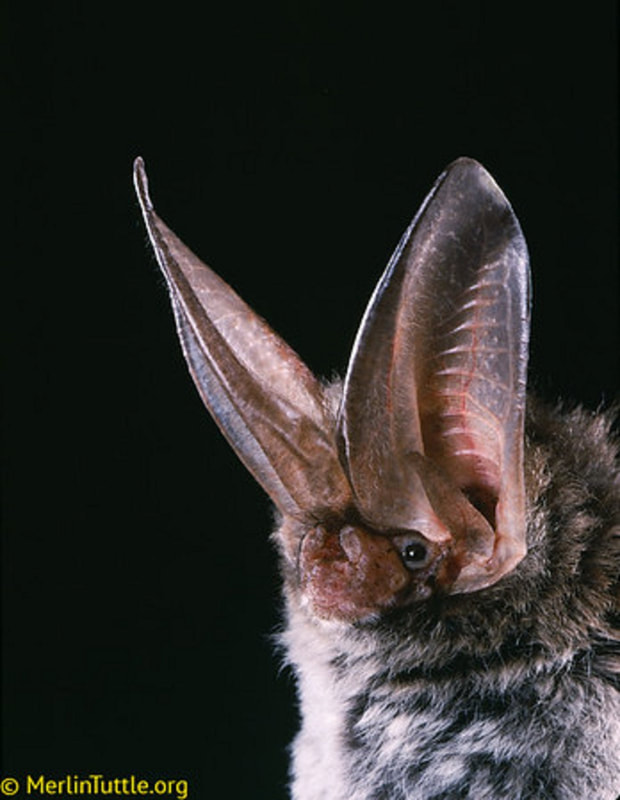Rafinesque's Big-eared bat (Corynorhinus rafinesquii)
The Rafinesque's big-eared bat is easy to identify because of its enormous ears, which measure about an inch in length!
They roost in forested areas, utilizing tree hollows and crevices behind loose bark. They also will use manmade structures such as abandoned trailers and sheds in wooded areas.
In Florida, they occupy the northern half of the peninsula and panhandle. They do form colonies, but are more often found in small groups, pairs, or alone.
They are the only bats in Florida that are capable of gleaning--the ability to capture insects off the ground and off foliage, instead of solely in the air.
They roost in forested areas, utilizing tree hollows and crevices behind loose bark. They also will use manmade structures such as abandoned trailers and sheds in wooded areas.
In Florida, they occupy the northern half of the peninsula and panhandle. They do form colonies, but are more often found in small groups, pairs, or alone.
They are the only bats in Florida that are capable of gleaning--the ability to capture insects off the ground and off foliage, instead of solely in the air.
At a glance:
Measurements |
Category |
Wingspan: 254 - 305 mm |
Family: Vespertilionidae |
Body Length: 38 - 56 mm |
Florida occurrence: Resident |
Total Length: 80 - 110 mm |
Florida status: Uncommon |
Forearm Length: 39 - 46 mm |
Roosting behavior: Colonial |
Weight: 6 - 14 g |
Regional classification: Temperate |
Bats of Florida
by Cynthia S. Marks and George E. Marks; Sep 26, 2006
by Cynthia S. Marks and George E. Marks; Sep 26, 2006

